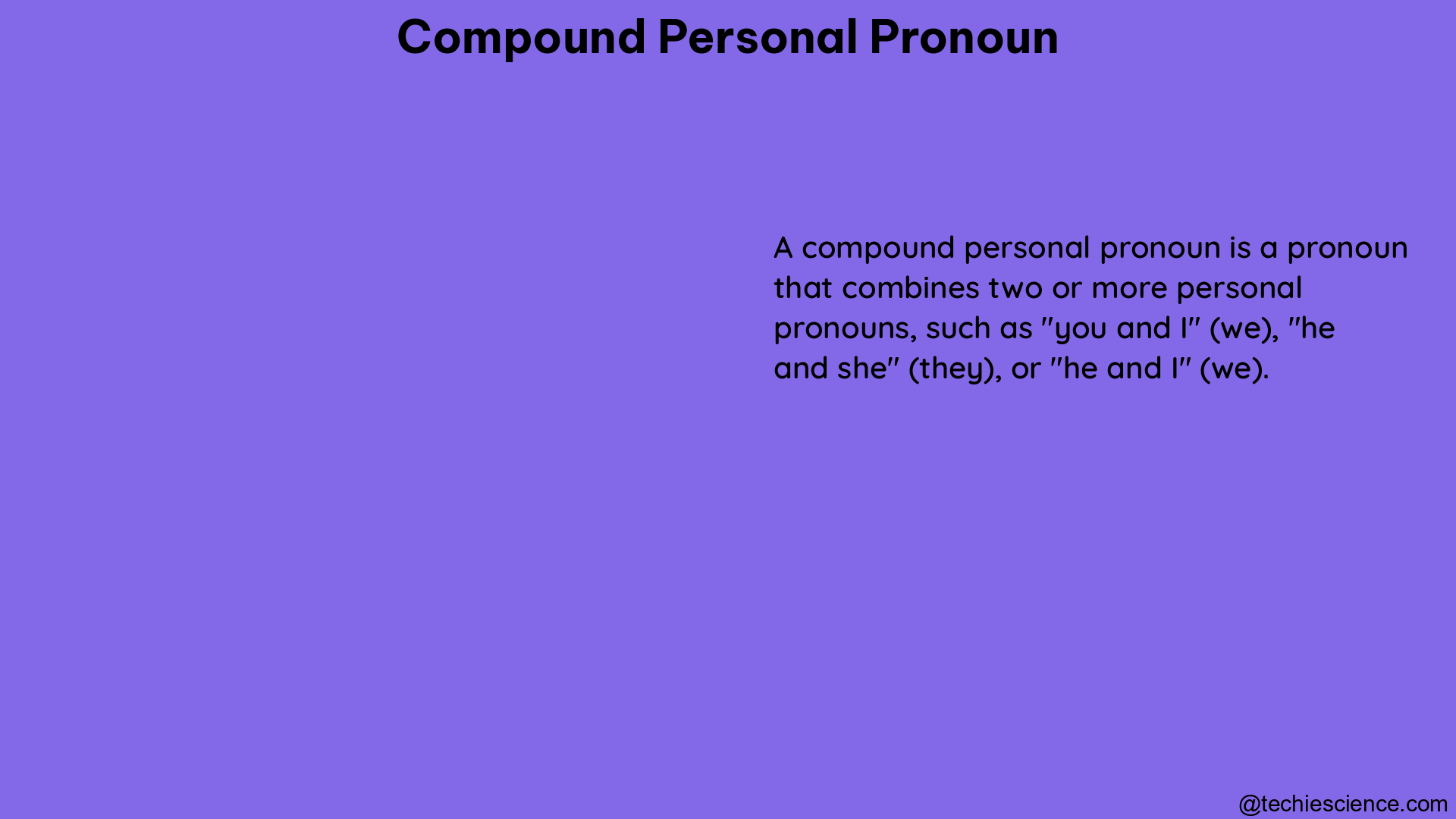Compound personal pronouns are a unique and essential part of the English language, serving to emphasize a noun or pronoun, or to refer back to the subject of a sentence. These pronouns are formed by combining a personal pronoun with the suffix “-self” or “-selves,” and their usage can be a source of confusion for many English learners. In this comprehensive guide, we will delve into the formation, usage, and nuances of compound personal pronouns, providing you with a thorough understanding of this important grammatical concept.
Formation of Compound Personal Pronouns
Compound personal pronouns can be divided into two main categories: singular forms and plural forms.
Singular Forms
The singular forms of compound personal pronouns are:
| Pronoun | Compound Form |
|---|---|
| I | myself |
| you | yourself |
| he | himself |
| she | herself |
| it | itself |
These compound pronouns are formed by adding the suffix “-self” to the corresponding personal pronoun.
Plural Forms
The plural forms of compound personal pronouns are:
| Pronoun | Compound Form |
|---|---|
| we | ourselves |
| you | yourselves |
| they | themselves |
These compound pronouns are formed by adding the suffix “-selves” to the corresponding personal pronoun.
It’s important to note that the compound personal pronouns “hisself” and “theirselves” are considered incorrect forms. Instead, the proper forms are “himself” and “themselves.”
Usage of Compound Personal Pronouns

Compound personal pronouns can be used in two primary ways: as intensive pronouns and as reflexive pronouns.
Intensive Pronouns
Intensive pronouns are used to emphasize a noun or pronoun. They add emphasis or intensity to the subject of the sentence. For example:
- “I myself will complete the project.”
- “The CEO herself approved the proposal.”
- “The students themselves organized the event.”
In these examples, the compound personal pronouns “myself,” “herself,” and “themselves” are used to emphasize the subjects “I,” “the CEO,” and “the students,” respectively.
Reflexive Pronouns
Reflexive pronouns are used when the object of a verb or preposition refers back to the subject of the sentence. They indicate that the subject is performing an action on itself. For example:
- “I hurt myself during the accident.”
- “The cat groomed itself after the bath.”
- “The team members congratulated themselves on their success.”
In these examples, the compound personal pronouns “myself,” “itself,” and “themselves” refer back to the subjects “I,” “the cat,” and “the team members,” respectively.
Exceptions and Special Cases
While the formation and usage of compound personal pronouns generally follow the patterns outlined above, there are a few exceptions and special cases to be aware of.
Royal “We”
When using the royal “we,” the compound personal pronoun “ourself” is used instead of “ourselves.” For example, “We ourself will make the final decision.”
Older English Usage
In older forms of English, simple personal pronouns like “me” and “thee” were sometimes used reflexively. However, this usage is generally avoided in modern writing, except in a few idiomatic expressions.
Additional Resources
To further enhance your understanding of compound personal pronouns, consider the following additional resources:
- Video Explanation: A detailed video explanation of compound personal pronouns
- Flashcards: Quizlet flashcards for compound personal pronouns
- Pronoun Usage: A PowerPoint presentation on SlideShare discussing pronoun usage in compound subjects and objects
References
By understanding the formation, usage, and nuances of compound personal pronouns, you can enhance your command of the English language and communicate more effectively. This comprehensive guide has provided you with the necessary knowledge to confidently navigate the world of compound personal pronouns.
Hey! I am Arpita Bose Roy. My qualifications are M.A. in English with B. Ed. in both general education and special education. I have 2 years of experience as a “language analyst” at IIT Kharagpur and 4 years of experience as an “Academic Content Developer” at IIT Kharagpur. Currently, I am working as an academic writer at Lambdageeks.